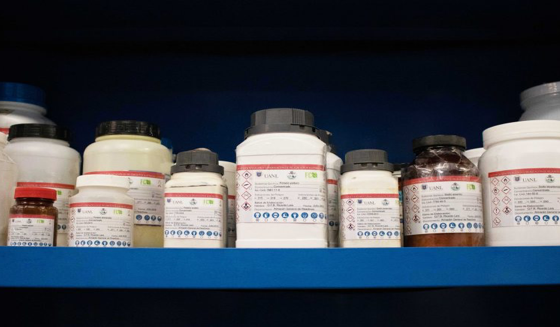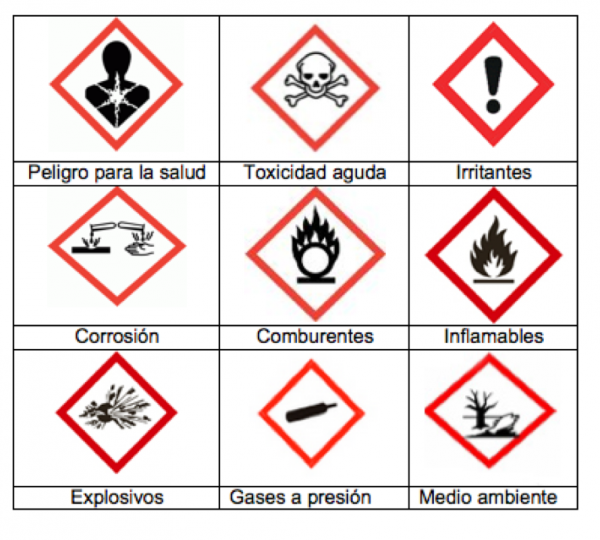Operational security program
Operational security program
Handling of chemical substances in the workplace

El uso de productos químicos para mejorar la calidad de vida es una práctica extendida globalmente. Aunque estos productos pueden ofrecer beneficios, también conllevan riesgos potenciales para los seres humanos y el medio ambiente.
Los productos químicos, debido a sus propiedades físicas, químicas y características toxicológicas, representan peligros para las instalaciones, equipos y la salud de las personas que trabajan con ellos. La exposición a través de la inhalación, contacto dérmico o ingestión puede resultar en intoxicación, quemaduras, daños orgánicos e incluso cáncer, dependiendo de la concentración de la sustancia y la duración de la exposición. Por esta razón, muchos países y organizaciones han establecido leyes y regulaciones a lo largo del tiempo que requieren la transmisión de información crucial mediante etiquetas y hojas de datos de seguridad.
Las Normas Oficiales Mexicanas relacionadas con sustancias peligrosas y agentes químicos contaminantes incluyen medidas de seguridad, evaluación de riesgos, identificación de peligros, capacitación y formación, hojas de datos de seguridad, y procedimientos para prevenir riesgos para la salud y la gestión de sustancias químicas.
En términos generales, estas normativas especifican el uso de equipo de protección personal adecuado para cada riesgo, la identificación y comunicación de peligros asociados con sustancias químicas, así como estándares de colores y señales para seguridad e higiene.
Globally Harmonized System (GHS)
The Globally Harmonized System was created with the intention of harmonizing existing systems into a single global system dealing with classification, labeling and safety data sheets. This system has its origins in the United Nations Conference on Development and Environment (ONCED) held in Brazil in 1992 following an initiative of the International Labor Organization (ILO).
In Mexico, the Official Mexican Standard NOM-018-STPS-2015 “Harmonized system for the identification and communication of hazards and risks due to dangerous chemical substances in work centers” is present, which establishes the requirements to have the system in work centers. harmonized identification and communication of hazards and risks due to dangerous chemical substances, in order to prevent harm to workers and personnel acting in an emergency.
Este sistema armonizado de identificación y comunicación de peligros y riesgos debe incluir mínimo lo siguiente:
- Listado actualizado de las sustancias químicas peligrosas (SQP) y mezclas que se utilicen en el centro de trabajo.
- Las hojas de datos de seguridad.
- Señalización o el etiquetado.
- Capacitación y adiestramiento del personal en este tema.
Updated list of SQPs
It must contain at least:
1) Name of the SQP
2) CAS number for the substance and for mixtures the CAS number of the components
3) Classification of their physical and health hazards (divisions or categories)
This harmonized hazard and risk identification and communication system should include the following:
- Listado actualizado de las sustancias químicas peligrosas (SQP) y mezclas que se utilicen en el centro de trabajo.
- Las hojas de datos de seguridad.
- Señalización o el etiquetado.
- Capacitación y adiestramiento del personal en este tema.
Safety Data Sheet (SDS)
The HDS contains information on the intrinsic characteristics and properties of chemical substances or mixtures, as well as the necessary safety and hygiene conditions, which serves as a basis for the development of hazard and risk communication programs in the workplace. Two important requirements of the HDS are that they must have 16 sections and be in Spanish.
Signage and labelling
Un pictograma es un símbolo o imagen que representa una palabra o idea. Los pictogramas del SGA tienen forma de rombo, borde color rojo apoyado en un vértice y un símbolo en color negro con fondo de color blanco, que permiten comunicar la información del peligro que presentan las sustancias químicas peligrosas o mezclas en el centro de trabajo, en el transporte, para los consumidores y sobre el medio ambiente.
Label
Es el conjunto de elementos escritos y gráficos relativos a la información de una sustancia química peligrosa o mezcla, la cual puede estar marcada, impresa, pintada o adherida en los contenedores o envases móviles de dichas sustancias químicas, la cual debe contener los siguientes elementos:
Name of the chemical substance, pictogram, precautionary and hazard statements, product and supplier identification.
Example:
The GHS is an excellent tool to improve consistent and simplified communication of chemical hazards and the practices to be followed for safe handling and use of chemicals and to raise awareness of the hazards, which will contribute to safer use of chemicals in the workplace and at home.
Training and training
It is important that all workers involved in the management of SQP, members of the safety and hygiene committee, personnel who have some type of role in the event of an emergency receive training at least once a year or every time a new SQP is included, when the HDS and/or the signage of the workplace is updated.
Everyday chemicals
Before choosing a cleaning or antimicrobial product, you must first decide whether the surface needs to be cleaned, sanitized, or disinfected. In most cases, a surface will need to be cleaned before sanitizing or disinfecting. When deciding which products to use on a surface, there are several factors to consider, different types of surfaces require different types of products and methods to eliminate microorganisms, if the surface requires sanitization that eliminates most microorganisms at the 99.9% level, in surfaces not in contact with food or if disinfection is required (to eliminate practically everything).
Some infectious diseases are spread by respiratory droplets, aerosols, and contact with fomites. Disinfecting or sanitizing surfaces will not completely prevent the spread of these diseases. The only way to prevent the spread of these transmitted diseases is to follow health prevention protocols.

Cleaning
Reduces microorganisms, dirt and impurities (dust, crumbs) by removing them from surfaces or objects. Dirt and organic material make some disinfectants less effective, so cleaning is necessary before disinfecting in most cases. It works by using soap or detergent and water on surfaces.
Sanitization
It is the process of reducing viable particles by means of chemical agents, which destroy especially pathogenic microorganisms, after the cleaning activity. Use chemicals to kill germs on surfaces and objects. Some common sanitizers are bleach and alcohol solutions. In general, you should let the sanitizer sit on surfaces and objects for a period of time to kill germs. Sanitizing does not necessarily clean dirty surfaces or eliminate germs.


Disinfection
It is the reduction of the number of microorganisms present, through chemical agents and/or physical methods, in the case of food to a level that does not compromise its safety or suitability, as well as in beverages or food supplements. It generally does not eliminate spores. Disinfecting means reducing the number of germs to a safe level. What is considered a safe level depends on the public health standards or requirements at a workplace or school, among others.
Incorrect use includes:
- Use the disinfectant without first removing visible dirt from the surface.
- Wipe or rinse disinfectant from the surface before the recommended contact time ends.
- Do not use the recommended dilution ratio.
Due to the above, the Environmental Protection Agency published an information sheet with the six steps for the safe and effective use of disinfectants:
- Verify that your product is approved by the EPA;
- Read the instructions;
- Clean the surface beforehand;
- Follow the contact time;
- Wear gloves and wash your hands;
- Keep them locked up.
These products are for use on surfaces, not on humans. It is important not to mix them and follow the instructions on the label to use them safely and effectively.
How can I safely clean and disinfect?
- Store them in their original containers. Always follow instructions and pay attention to label warnings.
- Do not mix cleaners and disinfectants unless labels say it is safe to do so. Combining certain products (such as chlorine bleach and ammonia cleaners) can cause serious injury or death.
- Read the label to see if you should wear gloves to protect your hands and/or eye protection when using these products.
- If you swallow, inhale, or come into contact with these products, follow the label directions or seek medical attention.
- Keep them out of the reach of children.
Fumigation
La fumigación es la aplicación de un fumigante en estado gaseoso para el control de plagas en un espacio confinado. Esta operación se realiza en espacios confinados que deban sellarse herméticamente a fin de evitar pérdidas de la sustancia aplicada.
Pest control is the action of maintaining pest populations below levels that cause harm to the health of humans, animals and flora. This includes the application of pesticides and disinfectants. The places where pest control services can carry out their activities are: homes, health centers, daycare centers, factories, commercial premises, markets, offices, gardens, streets and other public places; and in which pests that affect public health occur.
Los lineamientos de las condiciones sanitarias de control de plagas, se pueden consultar en la Norma Oficial Mexicana NOM-256-SSA1-2012, Condiciones sanitarias que deben cumplir los establecimientos y personal dedicados a los servicios urbanos de control de plagas mediante plaguicidas, esta norma tiene por objetivo establecer los requisitos sanitarios que deben cumplir los establecimientos dedicados a los servicios urbanos de control de plagas en zonas urbanas.
Establishments that provide these services must comply with the documentation and requirements listed by the Federal Commission for the Protection against Sanitary Risks (COFEPRIS) for compliance as well as subsequent health verification visits.

Chemical products can cause effects on all systems of the human body, depending on the route of entry, whether through the respiratory, digestive or dermal routes, the time of exposure to them, the number of exposures, the physical state (solid, liquid or gaseous) and the sensitivity or susceptibility of people to these substances.
Some of the damage to health that could occur by not taking preventive measures into account when handling chemical substances are: irritation to the skin, eyes and respiratory tract, changes in skin pigmentation, damage to the liver and kidneys, mutagenicity, cancer and even death.
Due to this, it is of utmost importance to carry out the proper management of chemical substances and hazardous materials since through said management we seek to prevent or mitigate risks to health and the environment, taking into account that the dispersion of chemical contaminants does not It has borders and its impacts can be not only local but global.
Therefore, at the UANL, all departments are currently promoting attention to the aforementioned items based on what is established in current regulations, since a large number of people (students, professors and employees) carry out academic activities, research and/or maintenance in laboratories, workshops, printing presses, among others, where chemical substances are used, which is why training courses and conferences are being carried out for all personnel who are involved in the handling of chemical substances and dangerous materials.
In addition, the Sustainability Guide for Workshops and Laboratories is available on the SS website, which, among other topics, includes information on the management of waste and chemical substances.


